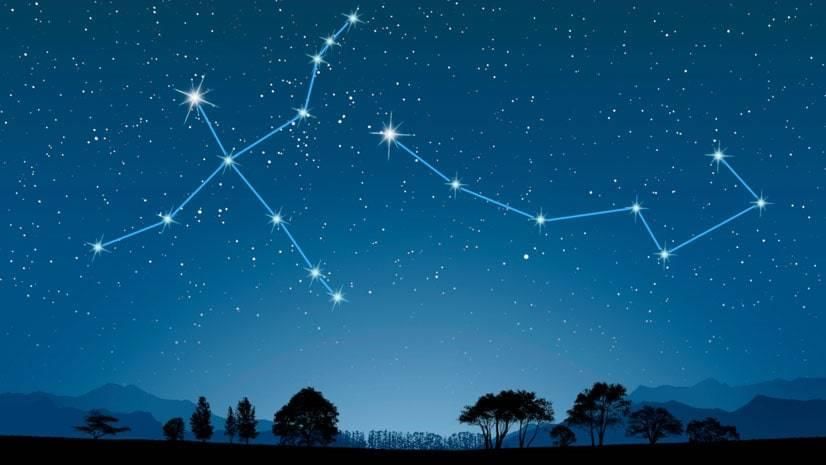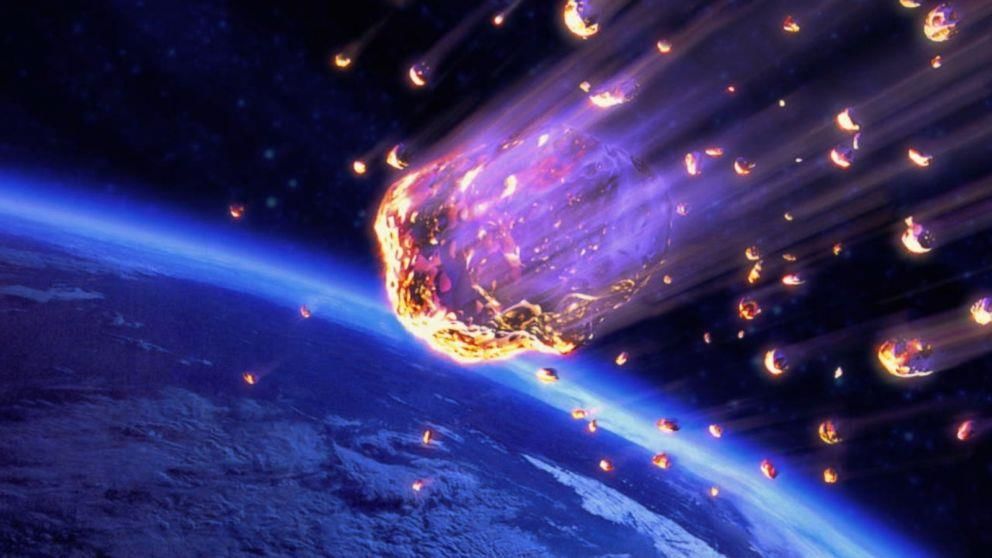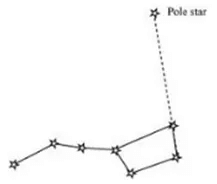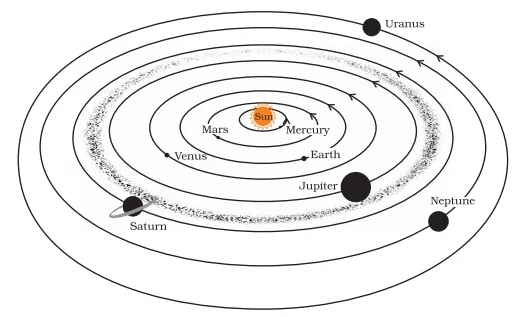NCERT Solutions for Class 8 Science - Stars and the Solar System
Q 1: Which of the following is NOT a member of the solar system?
(a) An asteroid
(b) A satellite
(c) A constellation
(d) A comet
Answer: (c) Constellation
A constellation is not a member of the solar system. Constellations are groups of stars that form recognisable shapes.
Q 2: Which of the following is NOT a planet of the sun?
(a) Sirius
(b) Mercury
(c) Saturn
(d) Earth
Answer: (a) Sirius
Sirius is a star and not a planet of the sun.
Q 3: Phases of the moon occur because
(a) we can see only that part of the moon which reflects light towards us.
(b) our distance from the moon keeps changing.
(c) the shadow of the Earth covers only a part of the moon's surface.
(d) the thickness of the moon's atmosphere is not constant.
Answer:(a) Phases of the moon occur because we can see only that part of the moon which reflects light towards us.
Moon does not produce its own light. We are able to see the moon because the sunlight falling on it gets reflected towards us. Thus, we see only that part of the moon from which the light of the sun gets reflected towards us.
Fig: Different phases of the moonQ 4: Fill in the blanks:
(a) The planet which is farthest from the sun is _________.
(b) The planet which appears reddish in colour is _________.
(c) A group of stars that appear to form a pattern in the sky is known as a __ _________.
(d) A celestial body that revolves around a planet is known as a_________.
(e) Shooting stars are actually not _________.
(f) Asteroids are found between the orbits of ________ and _________.
Answer:
(a) The planet which is farthest from the sun is Neptune
(b) The planet which appears reddish in colour is Mars
(c) A group of stars that appear to form a pattern in the sky is known as a constellation
(d) A celestial body that revolves around a planet is known as a satellite
(e) Shooting stars are actually not stars
(Shooting stars are not stars, they are meteors)
(f) Asteroids are found between the orbits of Mars and Jupiter.
(Asteroids occupy a large gap between the orbits of Mars and Jupiter)
Q 5: Mark the following statement as true (T) or false (F).
(a) Pole star is a member of the solar system. ( )
(b) Mercury is the smallest planet of the solar system. ( )
(c) Uranus is the farthest planet in the solar system. ( )
(d) INSAT is an artificial satellite. ( )
(e) There are nine planets in the solar system. ( )
(f) Constellation Orion can be seen only with a telescope. ( )
Answer:
(a) False
Stars are not a member of the solar system. The sun and the celestial bodies revolving around it form the solar system.
(b) True
Mercury is the smallest planet of the solar system.
(c) False
Neptune is the farthest planet in the solar system.
(d) True
INSAT is an artificial satellite.
(e) False
There are eight planets in the solar system.
They are Mercury, Venus, Earth, Mars, Jupiter, Saturn, Uranus and Neptune.
(f) False
Constellation Orion can be seen during winters around late evenings. It is one of the most magnificent constellations in the sky, visible to the naked eyes.
Q 6: Match items in column A with one or more items in column B.
A | B | ||
(i) | Inner planets | (a) | Saturn |
(ii) | Outer planets | (b) | Pole star |
(iii) | Constellation | (c) | Great Bear |
(iv) | Satellite of the Earth | (d) | Moon |
(e) | Earth | ||
(f) | Orion | ||
(g) | Mars | ||
Answer:
A | B | ||
(i) | Inner planets | (g), (e) | Mars, Earth |
(ii) | Outer planets | (a) | Saturn |
(iii) | Constellation | (c), (f) | Great Bear, Orion |
(iv) | Satellite of the Earth | (d) | Moon |
Q 7: In which part of the sky can you find Venus if it is visible as an evening star?
Answer: Venus appears in the western sky after sunset and is called the evening star.
Q 8: Name the largest planet of the solar system.
Answer: The largest planet of the solar system is Jupiter.
Q 9: What is a constellation? Name any two constellations.
Answer: A constellation is a group of stars that form a recognizable pattern in the sky.
The two well known constellations are Ursa Major and Orion.
 Fig: Constellation
Fig: Constellation
Q 10: Draw sketches to show the relative position of prominent stars in (a) Ursa Major and (b) Orion
Answer: (a) Ursa Major appears like a big dipper. There are three bright stars in the handle and four stars in the bowl of the dipper (as shown in the given figure).
Fig: Ursa Major
(b) Orion appears like a hunter. Three bright stars appear in the belt, while five bright stars are arranged in the form of a quadrilateral (as shown in the given figure).
Fig: OrionQ 11: Name two objects other than planets which are members of the solar system.
Answer: (i) Asteroids
A collection of a large number of small objects, gases and dust are revolving around the sun. They occupy a large gap between the orbits of Mars and Jupiter. However, these are not planets. These celestial objects are known as asteroids.
 Fig: Asteroids(ii) Meteors
Fig: Asteroids(ii) Meteors
Meteors are small celestial objects that are seen as bright streaks of light in the sky. They brunt out on entering the Earth's atmosphere because of the heat produced by friction. This results in bright streaks in the sky. They are not planets.
 Fig: MeteoritesQ 12: Explain how you can locate the Pole Star with the help of Ursa Major.
Fig: MeteoritesQ 12: Explain how you can locate the Pole Star with the help of Ursa Major.
Answer: To find the location of pole star with the help of ursa major, consider the two stars at the end of the bowl of ursa major. Now, draw an imaginary straight line in northern direction connecting these two stars. The imaginary line would meet a star known as pole star. The distance of pole star is around five times away from the bowl.
 Q 13: Do all the stars in the sky move? Explain.
Q 13: Do all the stars in the sky move? Explain.
Answer: No, The Earth rotates from West to East on its axis. Hence, all stars in the sky (except the Pole star) appear to move from East to West. With reference to the Earth, the Pole star does not appear to move in the sky because it is located above the axis of rotation
of the Earth in the north direction. It appears to remain stationary at a point in the sky.
Q 14: Why is the distance between stars expressed in light years? What do you understand by the statement that a star is eight light years away from the Earth?
Answer: The distance of the stars from the Earth and the distance between the stars are very large. It is inconvenient to express these distances in kilometer (km). Thus, these large distances are expressed in light years. One light year is the distance travelled by light in one year. One light year is equal to 9.46 x 1012 km.
A star is located eight light years away from the Earth. This means that the distance between the star and the Earth is equivalent to the distance travelled by light in eight years, i.e., a star is located 8 x (9.46 x 1012) = 7.6 x 1013 km away from the Earth.
Q 15: The radius of Jupiter is 11 times the radius of the Earth. Calculate the ratio of the volumes of Jupiter and the Earth. How many Earths can Jupiter accommodate?
Answer: Given that the radius of jupiter is 11 times the radius of the earth. Suppose the radius of earth be r, then the radius of the jupiter will be 11r.
Therefore, ratio of volumes of jupiter and earth = (volume of jupiter)/(volume of earth)
= (4/3 π (11r)3)/ (4/3 π r3)
= 1331/1
= 1331:1
Hence, jupiter can accommodate 1331 number of earths.
Q 16: Boojho made the following sketch (Fig. 17.29) of the solar system. Is the sketch correct? If not, correct it. Fig. 17.29Answer: The sketch made by boojho is not correct because the position of mars, venus, uranus and neptune are wrong. The position of mars & venus and uranus & neptune should be interchanged. The correct sketch is as shown below:
Fig. 17.29Answer: The sketch made by boojho is not correct because the position of mars, venus, uranus and neptune are wrong. The position of mars & venus and uranus & neptune should be interchanged. The correct sketch is as shown below:

|
113 videos|525 docs|217 tests
|
FAQs on NCERT Solutions for Class 8 Science - Stars and the Solar System
| 1. What are stars and how are they formed? |  |
| 2. How do stars produce energy? |  |
| 3. What is the life cycle of a star? |  |
| 4. How are the distances between stars measured? |  |
| 5. What is the Solar System and how is it structured? |  |

















